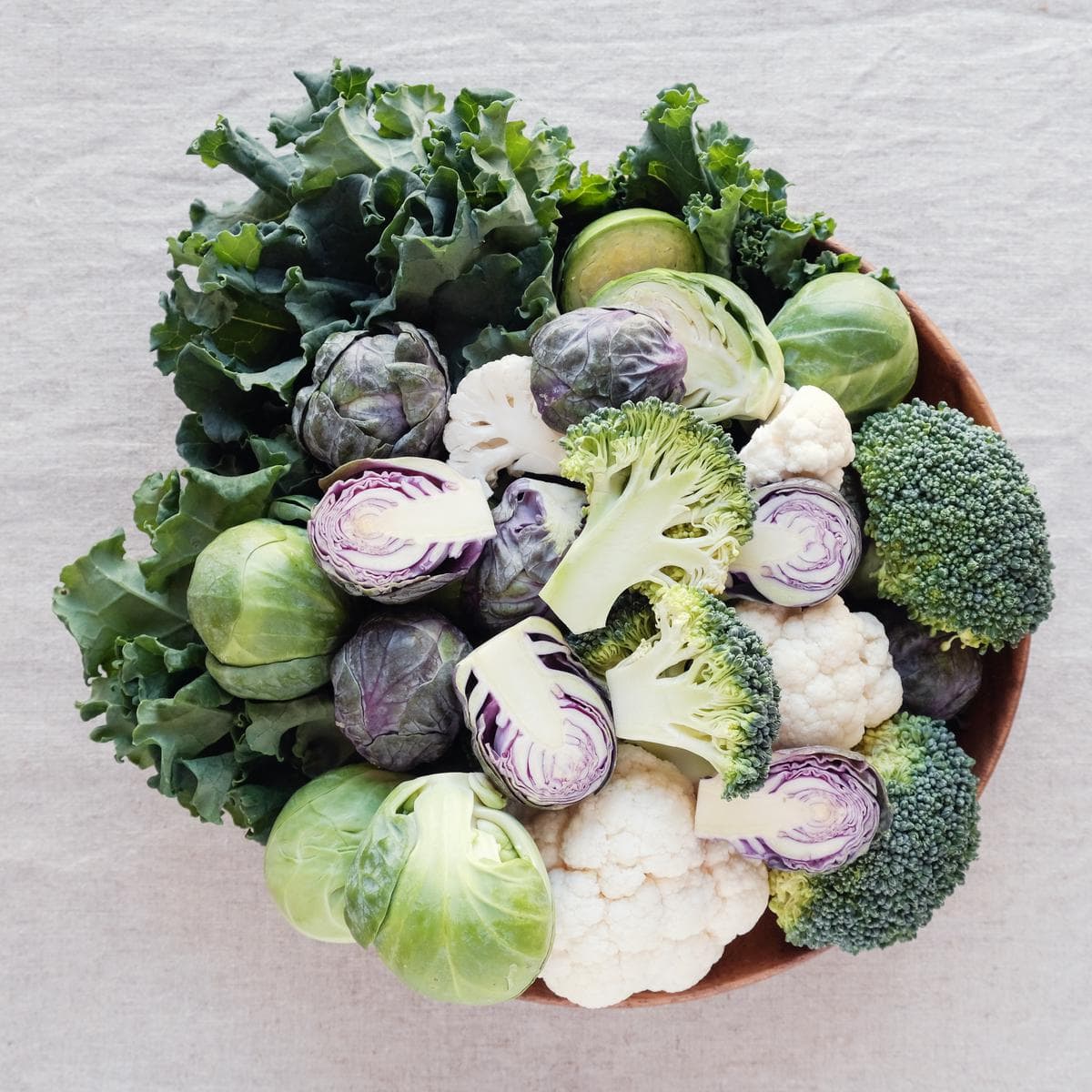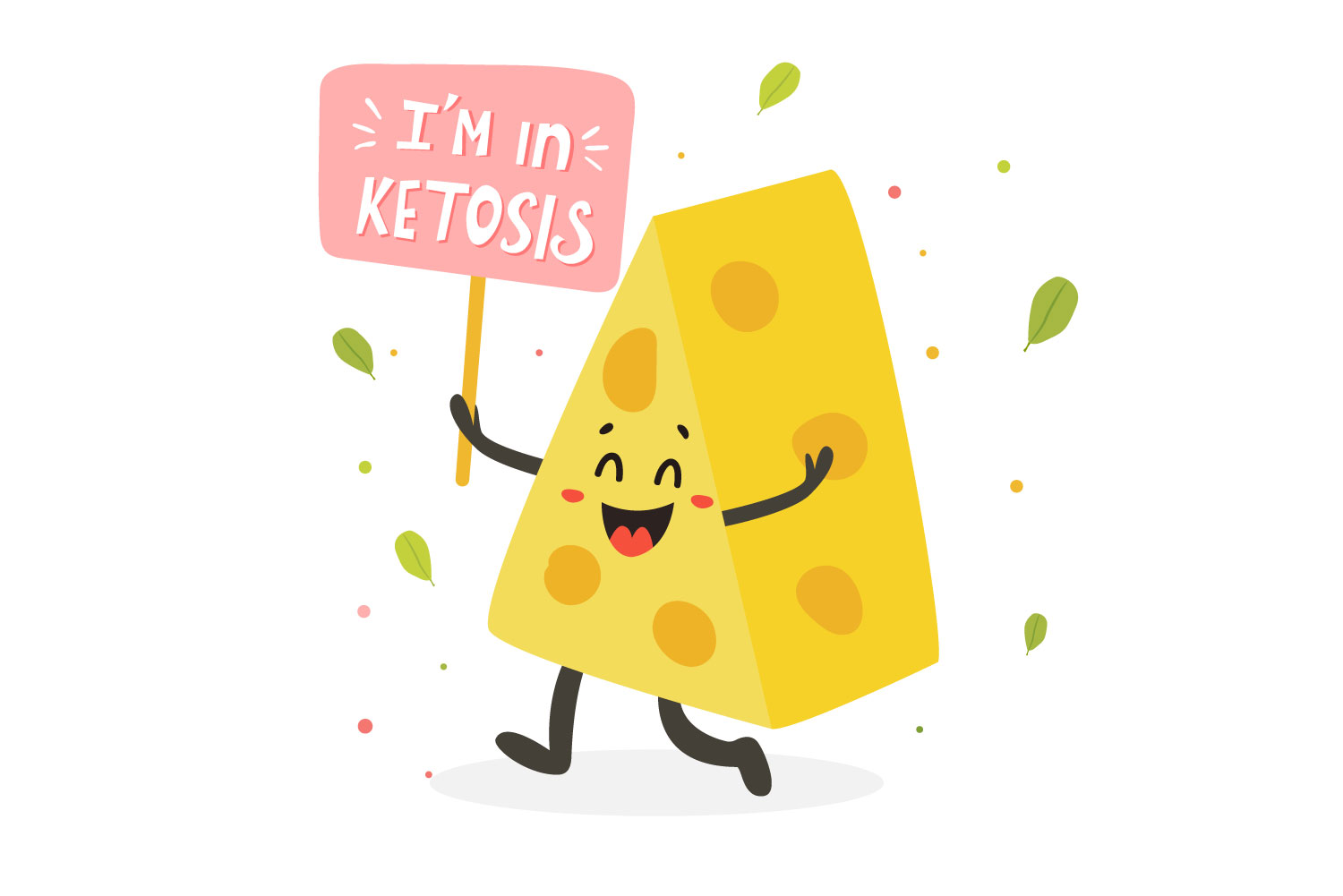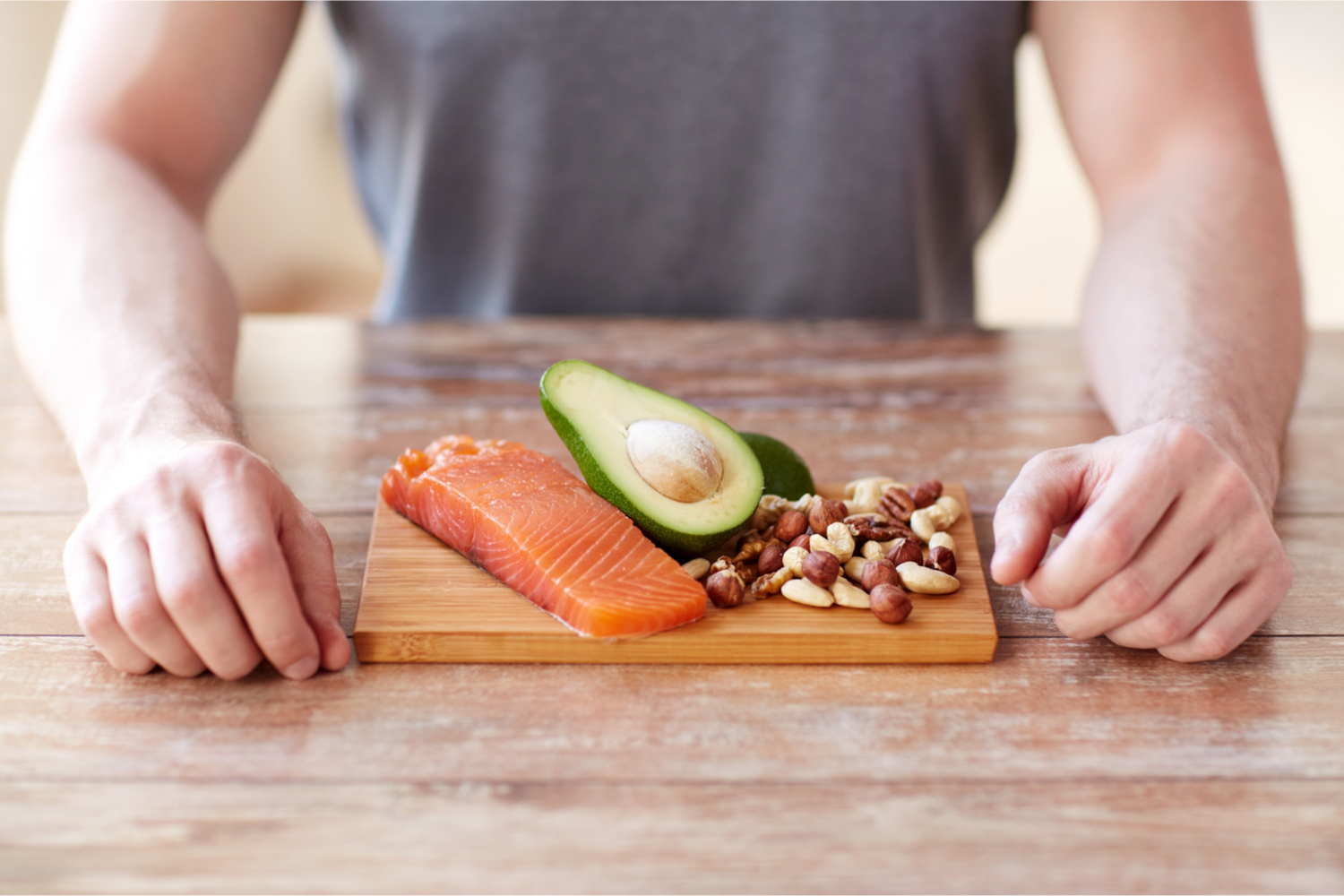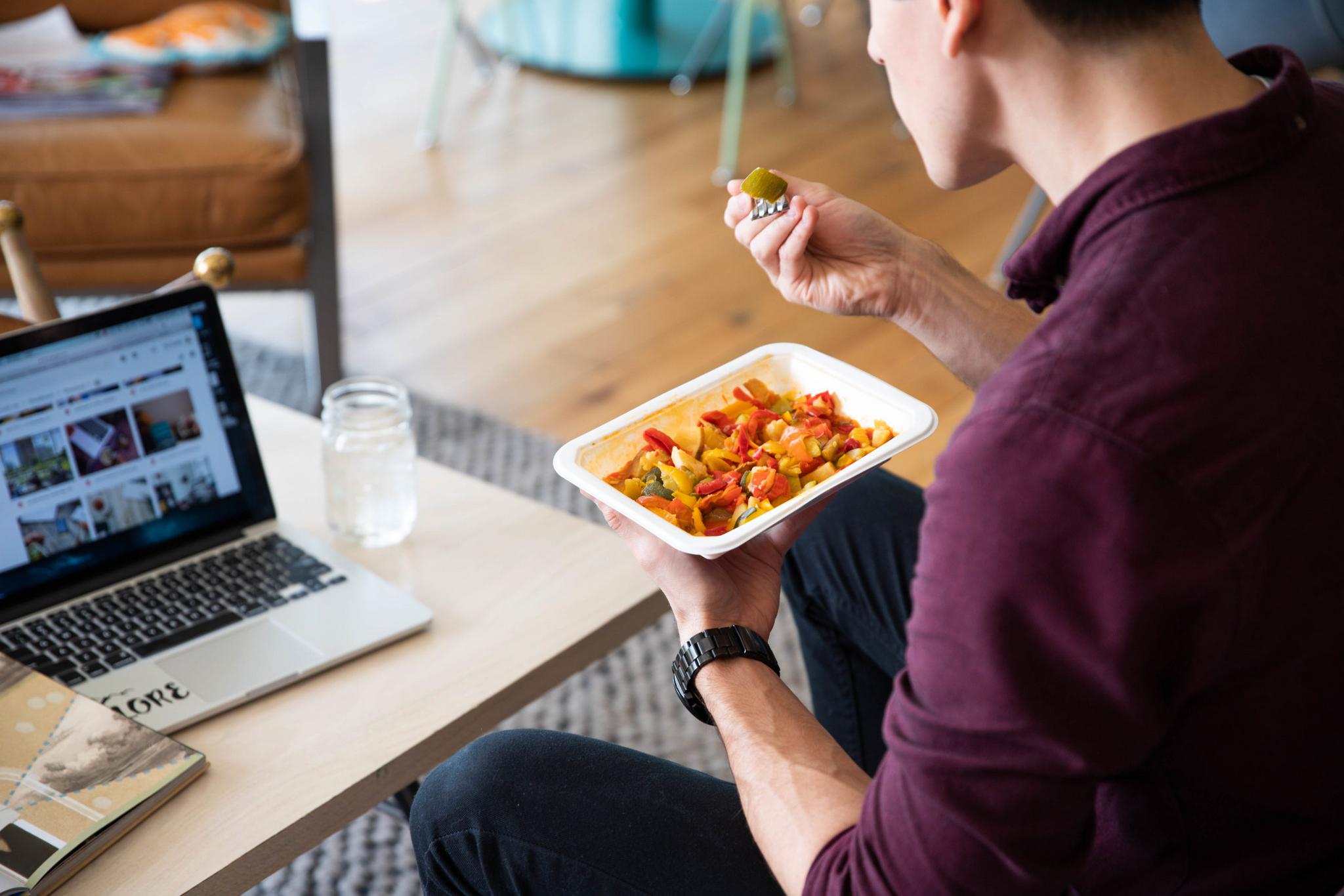SUMMARY
Veggies add nutrients that enrich your keto diet. These delicious and nourishing keto vegetables are excellent choices if you’re on a low-carb eating plan.
Vegetables are often an afterthought for those on a keto diet.
It’s easy to see why. After all, keto is an eating plan that emphasizes foods with high fat content. Vegetables are pretty low in fat.
Still, there are many good reasons for adding a heaping serving or two of veggies to your keto meal plan. Vegetables add unique nutritional value that you won’t get from other food groups.
Several vegetables are keto-approved. That means you can benefit from the nourishment veggies provide without fear of being thrown out of ketosis.
So, which vegetables are best suited for a keto lifestyle?
In this article:
- We’ll discuss a couple of basic keto principles that can help you make informed choices about vegetable consumption.
- Next, we’ll explain why it’s a good idea to include vegetables in your keto diet.
- Then we’ll provide you with a list of 25 keto-friendly vegetables with their carb counts included; we’ll also let you know which veggies are the worst choices if you’re on a keto diet.
- Finally, we’ll wrap things up by listing some keto recipes that include some of the veggies on our list.
Keto macro goals

Before we take a look at keto vegetables, it’s important to understand a couple of basic rules regarding the keto diet.
A keto eating plan requires you to follow a certain macronutrient ratio. A macronutrient ratio – or macro – is essentially a breakdown that lists how much fat, protein and carbs your diet contains.
With keto, the macro goals look like this:
- 55 to 60 percent of your calories come from fat
- 30 to 35 percent of your calories come from protein
- 5 to 10 percent of your calories come from carbohydrates
If you’re eating 2,000 calories a day, you need to limit your daily carb intake to no more than 20 to 50 grams if you want to stick to the macro goals discussed above.
This macro ratio forces your body to turn to fat instead of carbs for energy. This places your body in a state called ketosis.
A ketogenic diet can provide superb assistance if you’re interested in losing weight, burning fat and improving your health. Studies show that a keto eating plan can support weight loss and lower your blood sugar.
To remain in ketosis and reap the benefits of a keto diet, it’s essential that you keep your carb consumption low.
What are net carbs?

If you’re watching your carbs as you follow a keto diet, you’ve probably come across food labels that list net carbs.
Carbs and net carbs are not the same.
When a food label lists a carbohydrate figure, it refers to the total amount of carbs the food contains.
However, net carbs are different. When net carbs are listed on a food nutrition label, this figure refers only to carbs that are absorbed by the body.
Your body doesn’t absorb fiber, which is commonly found in vegetables. Also, your body doesn’t absorb sugar alcohols such as xylitol and erythritol. As a result, carbs contained in a food’s fiber and sugar alcohols aren’t included when calculating net carbs.
So, to put it all together…
Net carbs = Total carbs minus carbs from fiber and sugar alcohols
When indicating the carb count of the keto vegetables on our list, we’ve listed net carbs, not total carbs.
Are vegetables important on keto?

Vegetables aren’t usually the stars of the show in a keto diet.
However, veggies add value that you won’t get from other food groups. Including them in your keto diet can enrich your health.
Here are some key benefits to consider regarding vegetable consumption, as listed by the U.S. Department of Agriculture (USDA):
- Vegetables have a lot of fiber. This isn’t true of many of the foods that are staple parts of the keto diet. Fiber supports healthy bowel function, and it can help prevent constipation and diverticulitis. Eating foods that are loaded with fiber can also help you feel full with less calorie consumption.
- Veggies are a rich source of potassium, a nutrient that many Americans don’t get enough of in their diets. Potassium supports healthy blood pressure, and it’s found in vegetables such as spinach.
- Also, vegetables provide folic acid. This nutrient helps the body form red blood cells.
- Finally, veggies are rich sources of vitamins A and C. Vitamin A promotes healthy eyes and skin, and it helps the body battle infections. Vitamin C helps cuts and wounds heal, and it protects the teeth and gums.
Keto vegetables list
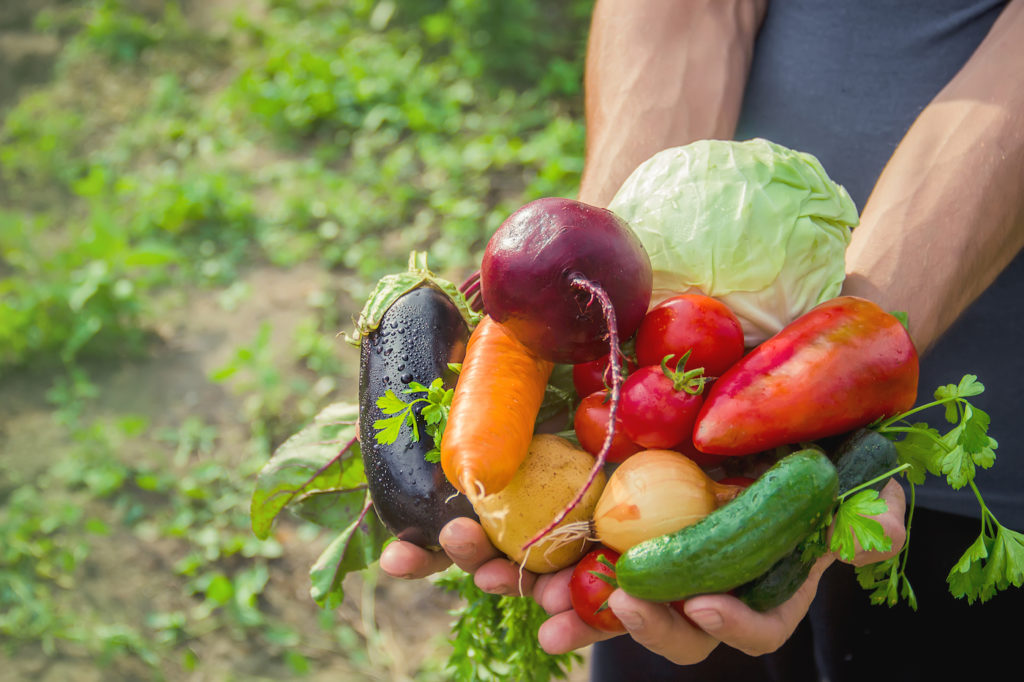
Now we’re ready to take a deep dive into the wonderful world of keto vegetables.
The choices shown below are some of the tastiest, most nutritious keto-friendly vegetables you can add to your diet.
They share a common trait: These are all non-starchy vegetables. Starchy vegetables tend to be higher in carbs. Variety is always a good thing, so we’ve included 25 veggies for you to consider.
These keto-approved vegetables are listed in order of net carb count, from lowest to highest. Each vegetable’s net carb count is sourced from USDA data.
Rapini
Also known as broccoli rabe, rapini is a green cruciferous vegetable with edible leaves, stems and buds. It’s frequently used in Chinese and Italian cuisines.
Rapini is a cousin of the common broccoli seen in grocery stores, and it’s also related to the cabbage and turnip families. This keto vegetable contains 0.2 net carbs per 100-gram serving.
Alfalfa sprouts
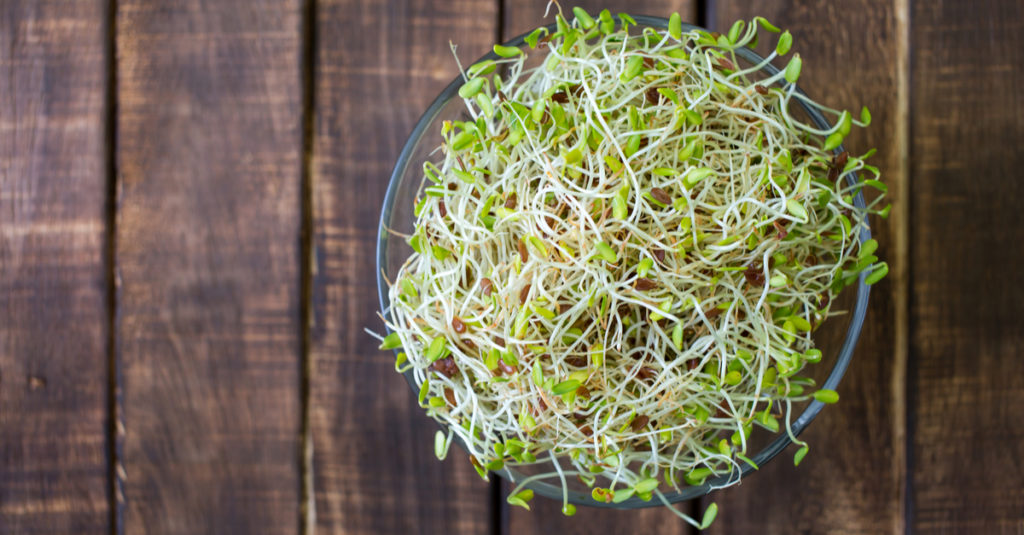
Sprouts are known for being nutrient-dense, and alfalfa sprouts are no exception. Germinated from alfalfa seeds, these low-carb veggies are loaded with antioxidants, as well as protein, chlorophyll, amino acids and vitamins.
You can use alfalfa sprouts to boost the nutritional content of your salads. These keto veggies have just 0.2 net carbs per 100-gram serving.
Endive
Endive is a leaf vegetable that’s part of the chicory family. This family includes veggies such as escarole and radicchio. Endive is crisp in texture, with a taste that’s sweet, nutty and slightly bitter. It’s delicious raw or cooked and contains 0.3 net carbs per 100-gram serving.
Kale
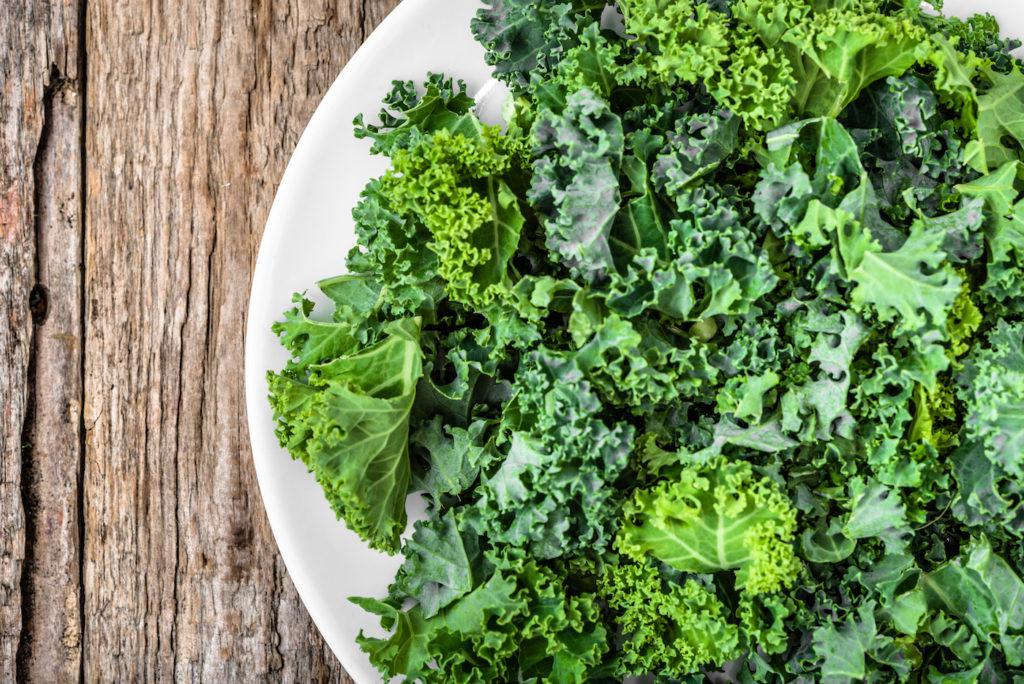
All hail kale! This cruciferous vegetable is a member of the cabbage family, and it’s a powerhouse of nutrition. Kale contains antioxidants that can help prevent heart disease and cancer. You can gobble it down raw in a salad, and you can also eat it cooked or boiled.
Kale makes a great addition to a hearty keto soup. This nutritious keto-approved vegetable contains just 0.3 net carbs per 100-gram serving when raw. Cooked kale contains 1.3 net carbs per 100 grams.
Watercress
If you’re not familiar with watercress, you’re missing out on some seriously impressive nutrition. This leafy green vegetable has round leaves, edible stems and a taste that’s mildly spicy.
Watercress is an extremely nutrient-dense food. It’s rich in vitamin K; this nutrient supports healthy bone development.
You can enjoy this nourishing keto veggie in a salad, tossed with a savory dressing. Watercress has 0.8 net carbs per 100-gram serving.
Bok choy
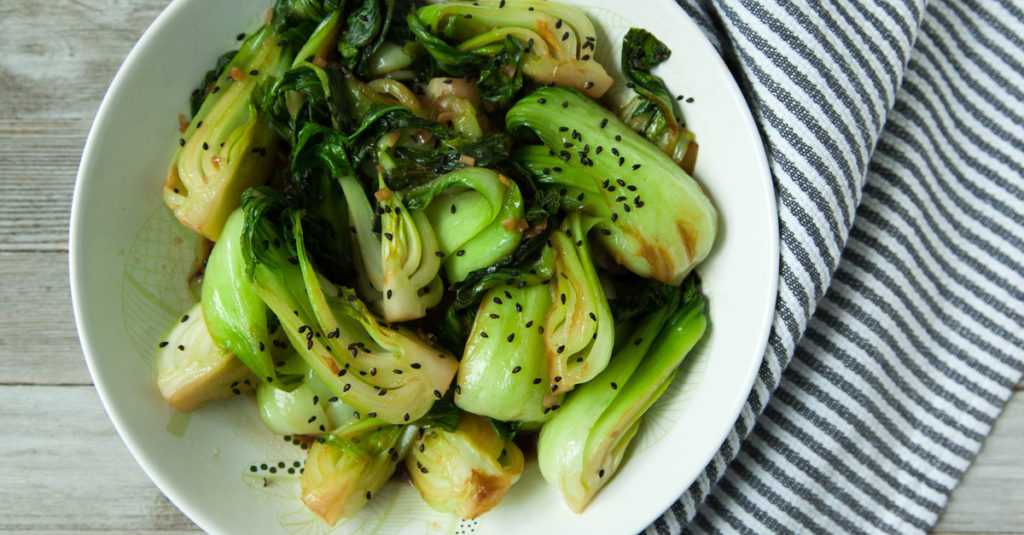
Bok choy is a type of Chinese cabbage, and it’s also known as pak choi or pok choi. It’s a cruciferous vegetable, and it’s part of the mustard family. Bok choy has thick stalks and dark green leaves, and the entire plant is edible. Its taste is similar to that of cabbage, with a peppery bite.
This keto vegetable is rich in potassium, as well as vitamins A, C and K. When cooked, it has a mere 0.8 net carbs per 100-gram serving. Raw bok choy contains 1.2 net carbs per 100-gram serving.
Cilantro
Cilantro lends its flavor to dishes that come from a wide cross-section of countries and cultures. You’ll find this food in many Mexican, Indian, Middle Eastern and Asian recipes.
This herb comes from the leaves of the coriander plant; coriander is part of the parsley family. You can use cilantro in sauces, pesto and salsa. Cilantro has 0.9 net carbs per 100 grams.
Asparagus
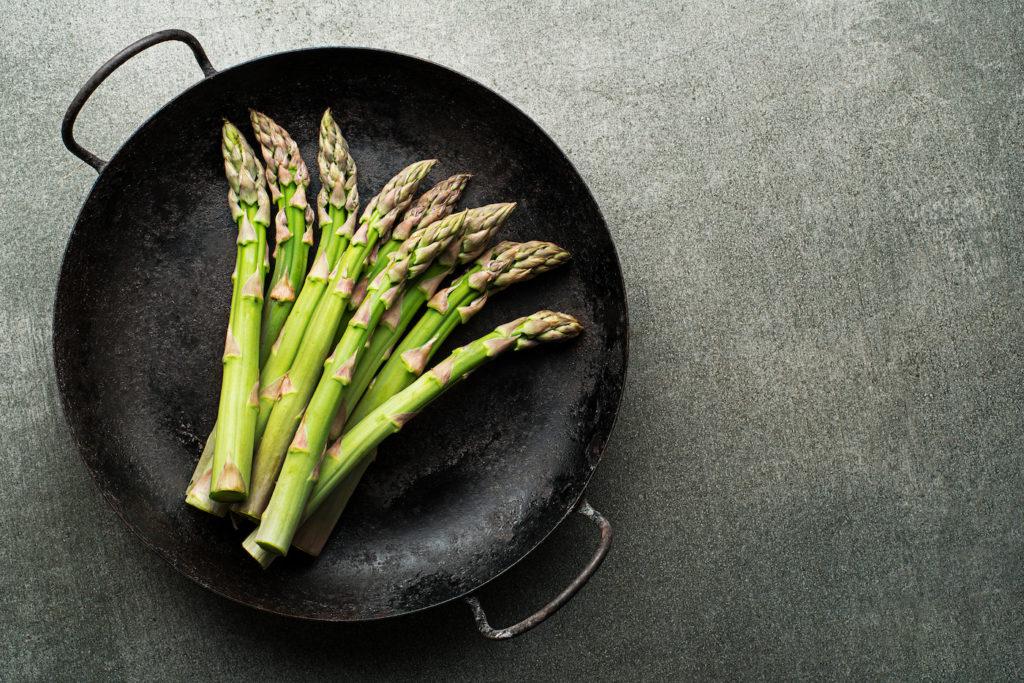
With its long green spears, asparagus has a look that’s all its own. It’s a member of the lily family, and it has an earthy flavor similar to that of broccoli or green beans. You can grill, steam or roast your asparagus, and it makes a tasty side dish for a keto entree. You can also eat it raw in your favorite salad, and it’s rich in vitamins K and B9.
Canned asparagus has just 0.9 net carbs per 100 grams. With raw and cooked asparagus, the net carb count rises to 1.8 and 2.1, respectively.
Bamboo shoots
Bamboo shoots are a staple part of many Asian dishes, and they add texture and flavor to stir-fry recipes. They’re also known as bamboo sprouts, and they’re sold fresh at many Asian markets. Canned bamboo shoots are more widely available, and they may be offered at your local grocery store.
This keto veggie is the tender, two-week-old shoot of the bamboo plant, harvested before it reaches a foot in height. It contains lots of protein, as well as vitamins C and B6.
Cooked bamboo shoots have just 0.9 net carbs per 100 grams., while canned bamboo shoots have a net carb count of 1.8. Raw bamboo shoots have 3 net carbs for each 100-gram serving.
Butterhead lettuce
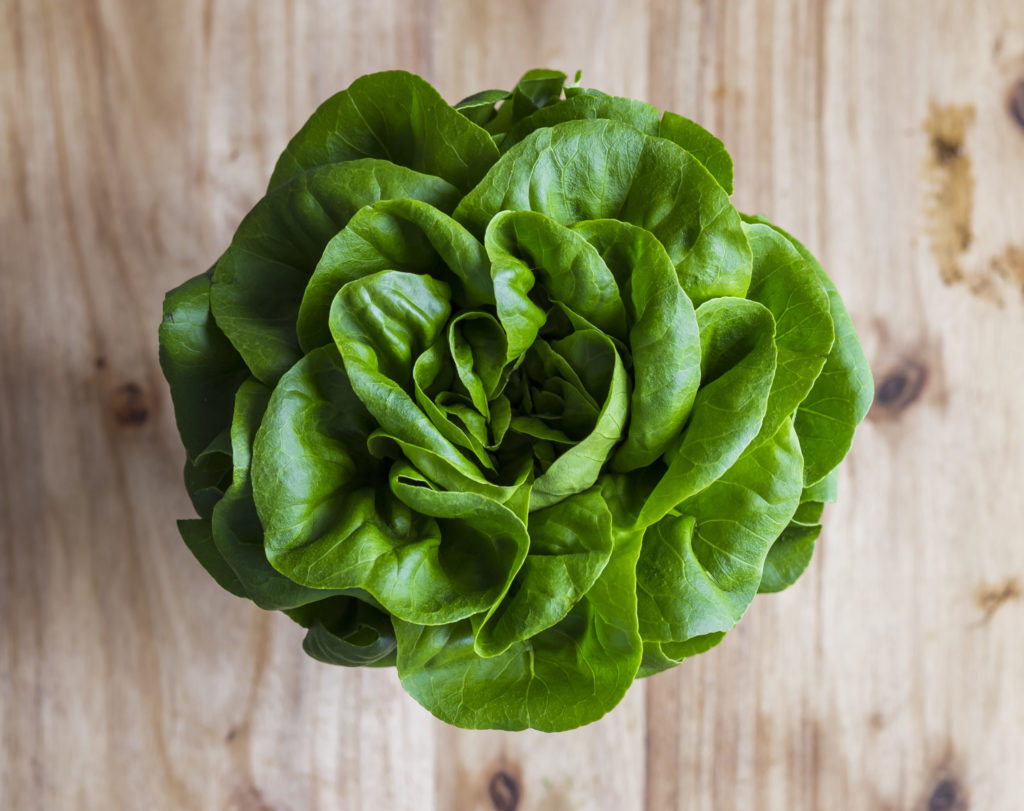
As its name suggests, butterhead lettuce has a smooth, buttery flavor. It’s an excellent source of nutrients such as thiamin, riboflavin, calcium, magnesium and phosphorus, as well as vitamins A, C and K. This keto-approved vegetable contains 1.1 net carbs per 100 grams.
Romaine lettuce
Romaine lettuce has a mild flavor that makes it a perfect complement for the vegetables typically found in a raw salad. It doesn’t have as much fiber as some of the other veggies on our list, but it contains lots of potassium, calcium, phosphorus and magnesium.
It also has loads of beta carotene, a nutrient that the body converts to vitamin A. Romaine lettuce has 1.2 net carbs per 100-gram serving.
Celery
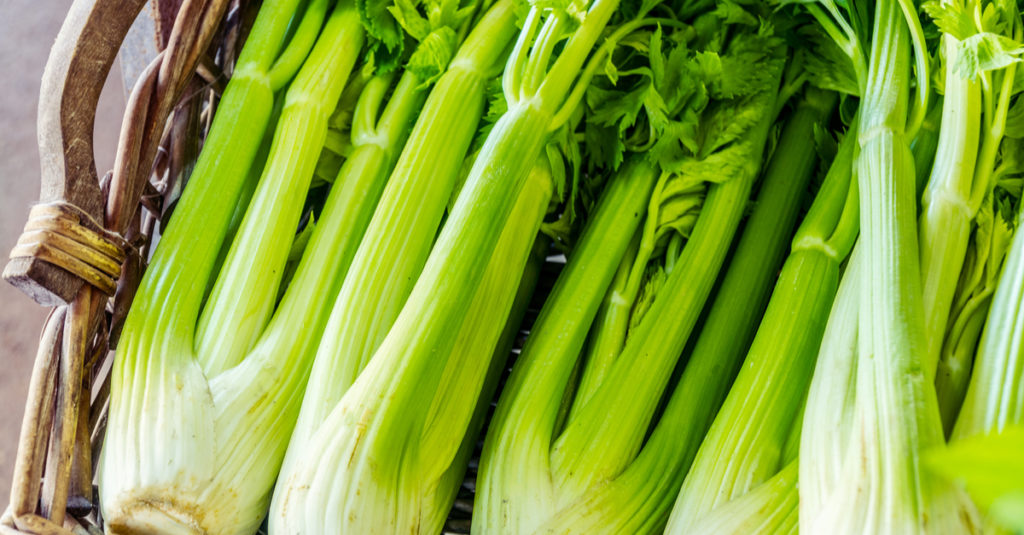
Celery’s low calorie count has made it a longstanding favorite with dieters seeking to shed a few pounds. This crispy, crunchy vegetable offers more nutritional benefits than you may realize.
It’s rich in antioxidants that can protect your cells and organs from oxidative damage. Also, it contains pectin-based polysaccharides that promote healthy digestion, and its high water content and generous amounts of fiber can help keep you regular.
Raw celery contains 1.4 net carbs per 100 grams. When cooked, the net carb count rises to 2.4.
Spinach
Spinach is a leafy green vegetable that’s part of the amaranth family, and it’s related to beets and quinoa. You can buy it fresh and eat it raw in a salad, or you can cook it and serve it as a savory side dish. You can also purchase canned spinach at your local grocery store.
This green vegetable is high in iron and calcium; these nutrients support bone health and help bring oxygen to your body’s tissues. Both raw and cooked spinach contain 1.4 net carbs per 100 grams.
Scallop squash
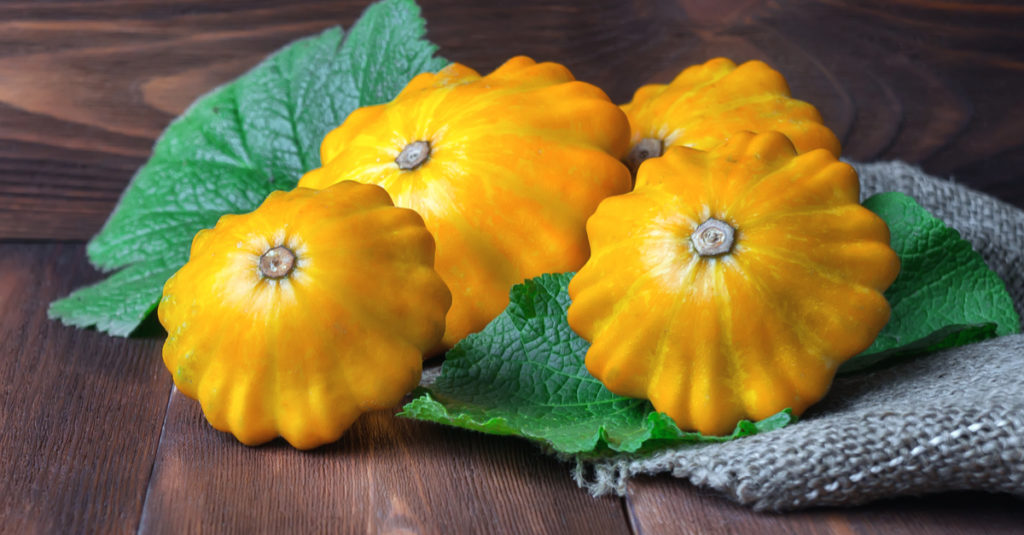
Also known as patty pan squash, scallop squash is recognizable by its small size and scalloped edges. It contains lots of fiber; fiber can stabilize your blood sugar levels and support digestive health. This squash is similar in many ways to zucchini, and it goes well with foods such as cheese, mushrooms and tomatoes.
Scallop squash can be fried, grilled, steamed, sauteed, baked, roasted or shredded. When cooked, this keto veggie contains 1.4 net carbs per 100 grams; when this squash is raw, its net carb count rises to 2.6.
Collards
Commonly referred to as collard greens, collards are part of the cabbage family. This vegetable can be cooked, steamed or shredded raw in salads. It can even be used as a low-carb gluten-free wrap.
Collards contain lots of iron, calcium, magnesium and potassium, and this keto veggie is also a rich source of chlorophyll. Raw collards contain 1.4 net carbs per 100 grams. With cooked collards, the net carb count is 1.7 per 100-gram serving.
Zucchini
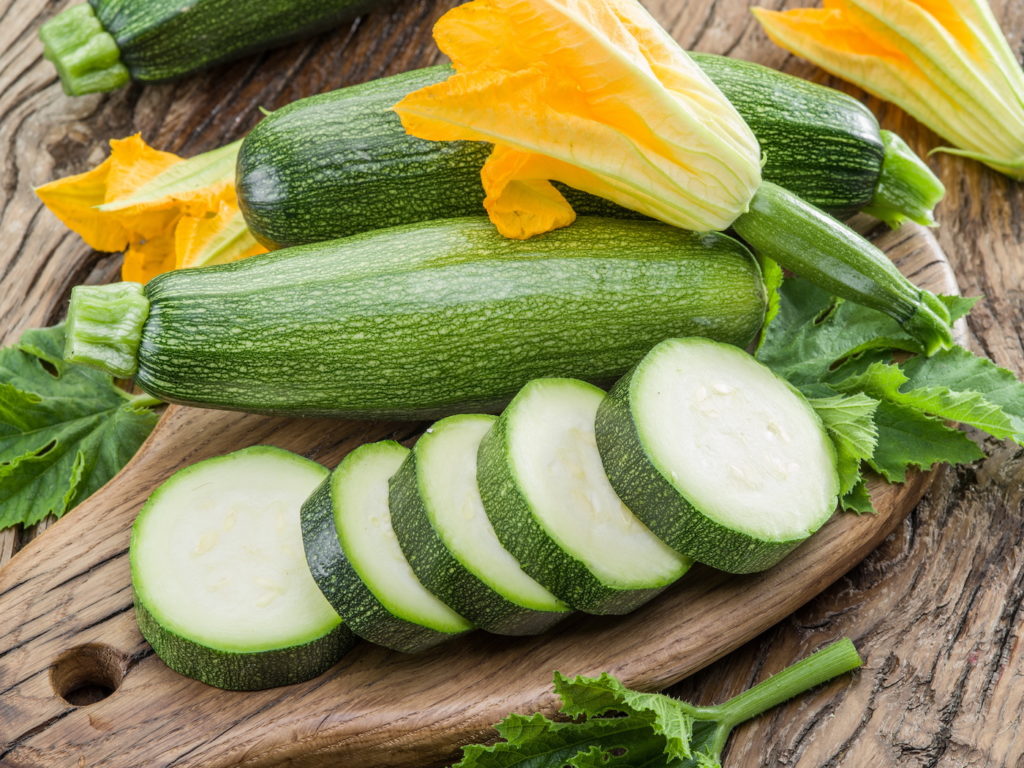
Zucchini is a summer squash. It’s treated as a vegetable, but it’s actually a young fruit. It has a mild flavor that goes well with many dishes. Zucchini noodles are often used as a low-carb substitute for traditional pasta.
This squash is high in fiber. Because of this, it’s very filling, and this quality can support your efforts if you’re looking to lose weight. It contains vitamins A and C, which can strengthen your immune system.
Cooked zucchini has 1.7 net carbs per 100 grams. When raw, this keto food has 2.1 net carbs per 100-gram serving.
Avocado
Avocado is a fruit, but it’s prepared and eaten like a vegetable, so it merits inclusion in our list. It’s high in healthy fat, and this makes it a natural fit for the keto diet. Unlike some fats, avocado has loads of fiber; this nutrient can help feed the friendly gut bacteria in your intestine.
This keto food has a creamy, fatty texture. It works well as a savory entree, and it can also be prepared with low-carb sweeteners to create keto ice cream and other delicious desserts. Avocados have just 1.8 net carbs per 100 grams.
White button mushrooms
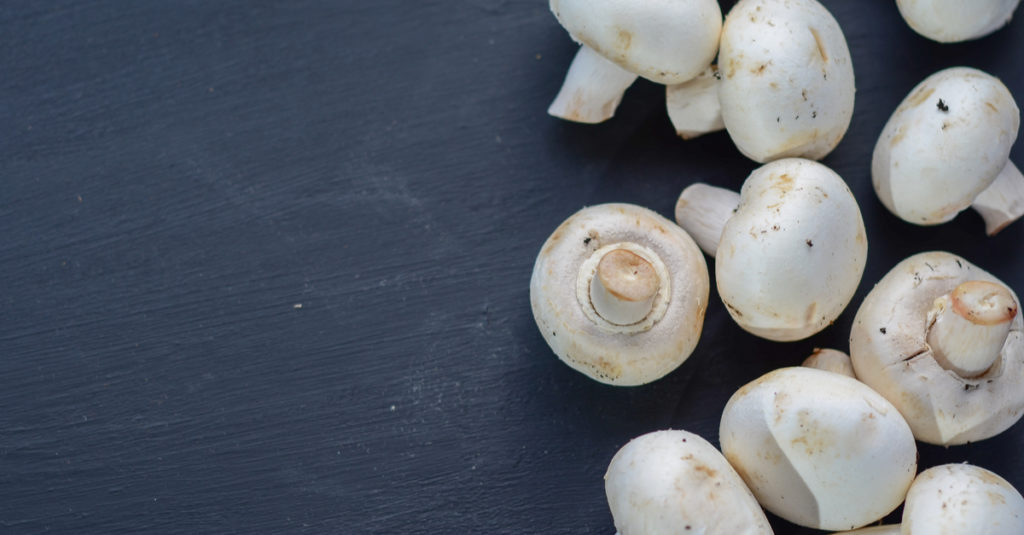
White button mushrooms are commonly used in everything from soups to stews to stir-fry dishes. They can be marinated, skewered or grilled, and they make a delicious topping for pizza, fish, poultry or meat.
Button mushrooms are very high in protein, and they also contain B vitamins, selenium and potassium. Stir-fried white button mushrooms contain 2.2 net carbs per 100 grams. When raw, these keto-approved veggies have 2.3 net carbs per 100-gram serving.
Hearts of palm
Hearts of palm are cut from the core of certain palm trees found in South and Central America. After they’ve been harvested, they’re diced into cylinders or rings and packed in water or brine. They have a delicate flavor comparable to that of artichokes.
These keto veggies can be eaten in salads, and they can also be boiled or fried. Hearts of palm are rich in zinc, potassium and vitamin C. Canned hearts of palm have 2.2 net carbs per 100 grams.
Bell peppers

Though they’re usually classed as vegetables, bell peppers are actually fruits that are part of the nightshade family. The only difference between green, yellow, orange and red bell peppers concerns ripeness; bell peppers that are fully ripe are red, and those that are unripe are green. Yellow and orange bell peppers are riper than green ones but not as ripe as red ones.
When sauteed, each 100-gram serving of green bell peppers has just 2.4 net carbs. Raw green bell peppers have 2.9 net carbs per 100 grams. Raw red bell peppers have 3.9 net carbs per 100 grams.
Portobello mushrooms
Portobello mushrooms are large in size, with a cap that ranges in color from brown to tan. When cooked, they have a texture that’s similar to that of meat. For this reason, they’re sometimes used as a meat substitute in vegan dishes.
These mushrooms have an earthy, rich flavor, and they’re brimming with vitamin D, selenium, copper and niacin. If you store them in a paper bag in the fridge, they’ll keep for roughly seven to 10 days. Raw portobello mushrooms have 2.6 net carbs per 100 grams.
Tomatoes
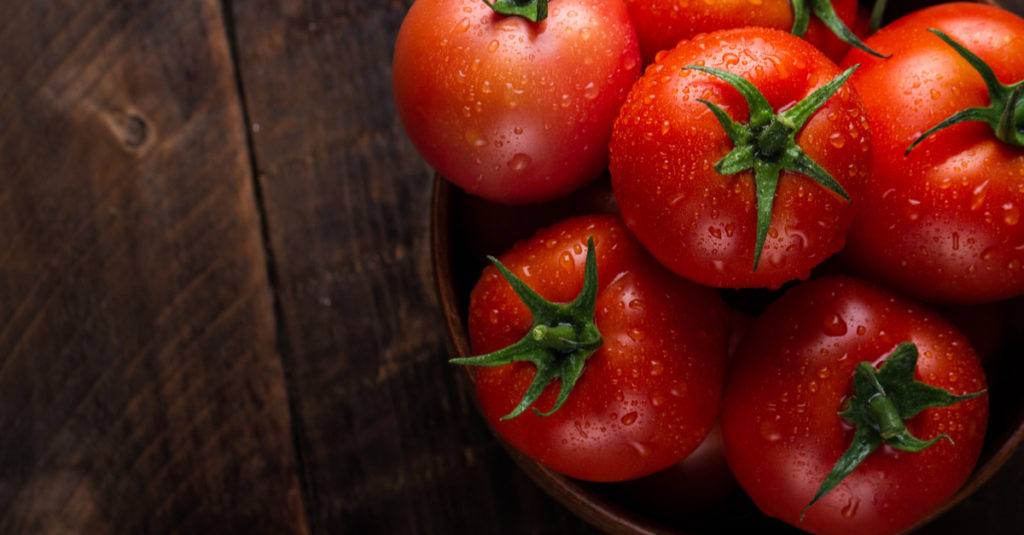
Botanically, tomatoes are fruits, but from a culinary perspective, they’re cooked and eaten like vegetables. Tomatoes are a rich source of lycopene, an antioxidant that can help reduce the risk of heart disease and cancer. They also have lots of folate, vitamin C and potassium.
Tomatoes can be eaten raw, grilled, pan seared, marinated or fried, and they make a yummy addition to keto soup. Raw tomatoes have 2.7 net carbs per 100 grams.
Cauliflower
Cauliflower is a cruciferous vegetable that’s packed with nutrition. Its calorie count may be low, but don’t let that fool you; this keto veggie is loaded with vitamins. Cauliflower is a good source of antioxidants that can prevent inflammation and slow the growth of cancer. It’s also high in choline, a nutrient that plays a key role in brain development.
Many people utilize cauliflower as a low-carb alternative for starchy vegetables. You can use cauliflower mash to replace mashed potatoes, and cauliflower rice makes a great substitute for white or brown rice. Raw cauliflower contains 3 net carbs per 100 grams.
Cucumber
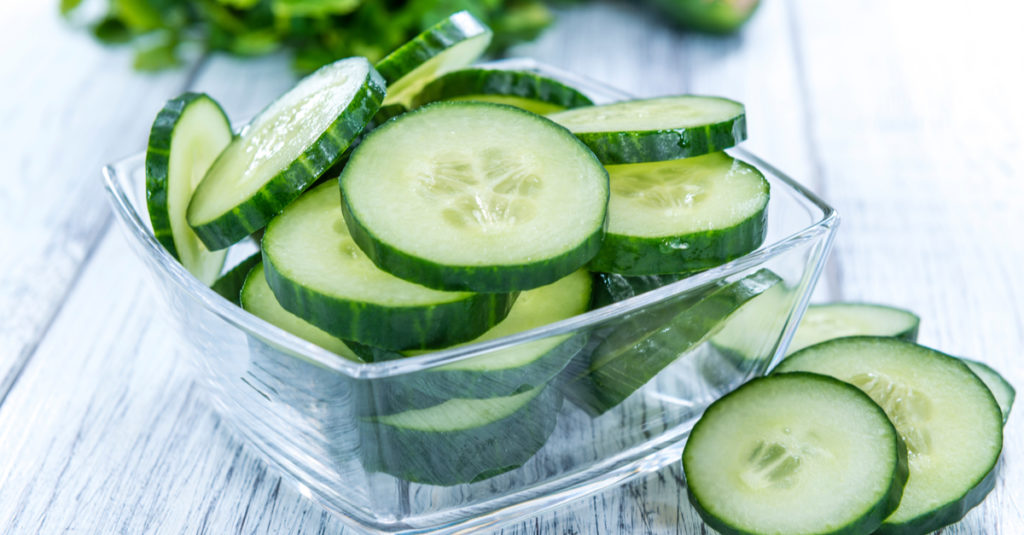
The cucumber is another one of those foods that’s technically a fruit but considered a vegetable because of the way it’s treated in the culinary world. You can pickle this food, or you can slice it and add it to a salad or vegetable platter.
Cucumbers are rich in plant compounds that can remove toxins and old waste materials from the body. This keto food has 3.1 net carbs per 100 grams.
Broccoli
Broccoli is jam-packed with a broad range of nutrients. This cruciferous veggie is related to Brussels sprouts, cabbage, kale and cauliflower. It contains bioactive compounds that may slow the mental decline associated with aging. Broccoli also contains lots of vitamin K, a nutrient that supports strong, healthy bones.
This green vegetable can be eaten raw, and it can also be steamed, sauteed or roasted. Cooked broccoli contains 3.9 net carbs per 100 grams. When raw, this keto vegetable has 4 net carbs per 100-gram serving.
Which vegetables are least keto-friendly?
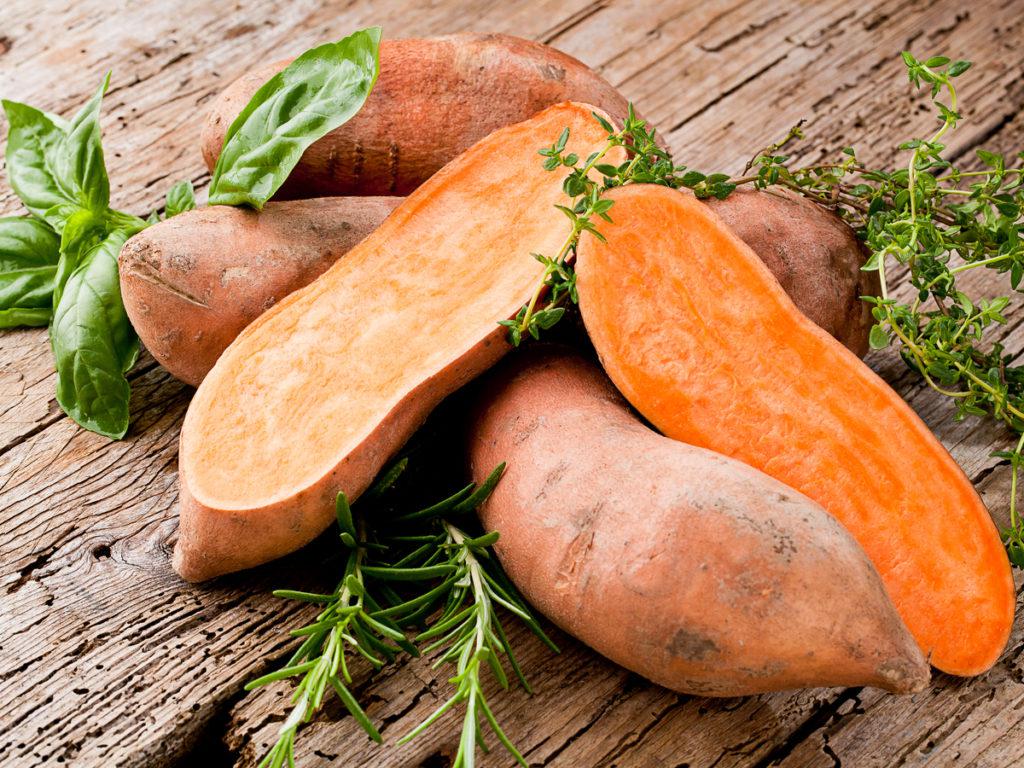
The veggies discussed below have relatively high carb counts. That makes them less keto-friendly than the picks we’ve listed above.
With each vegetable, we’ve included its net carbs per 100 grams. The veggies are listed in order from most to least net carbs:
- Dried shiitake mushrooms – 63.9 net carbs
- Sun-dried tomatoes – 43.5 net carbs
- Cassava – 36.3 net carbs
- Garlic – 31 net carbs
- Pea sprouts – 27.1 net carbs
- Taro – 29.5 net carbs cooked, 22.4 raw
- Yam – 23.6 net carbs cooked
- Lentil sprouts – 22.1 net carbs
- Sweet potatoes – 21.5 net carbs cooked and mashed, 17.1 raw
- Potato – 20.1 net carbs baked with no skin, 19 baked with skin, 18.3 boiled
- Corn – 19 net carbs cooked, 16.7 raw
- Lima beans – 18.2 net carbs cooked, 9.7 canned
- Ginger – 15.8 net carbs
- Wasabi root – 15.7 net carbs
- Beets – 15.5 net carbs pickled, 8 cooked, 6.8 raw
- Shallots – 13.6 net carbs
- Parsnips – 13.4 net carbs cooked, 13.1 raw
- Leeks – 12.4 net carbs
- Acorn squash – 10.2 net carbs baked, 8.9 raw, 6.2 cooked
- Green peas – 10.1 net carbs cooked
- Butternut squash – 9.7 net carbs raw, 7.3 cooked
- Wakame – 8.6 net carbs
- Kelp seaweed – 8.3 net carbs
- Onions – 7.6 net carbs
- Carrots – 6.8 net carbs raw, 5.2 cooked
Keep in mind that some of these veggies don’t have to be written off completely. For example, you’ll find garlic and onions in many keto recipes. You just need to remember to consume them sparingly.
Keto vegetable recipes
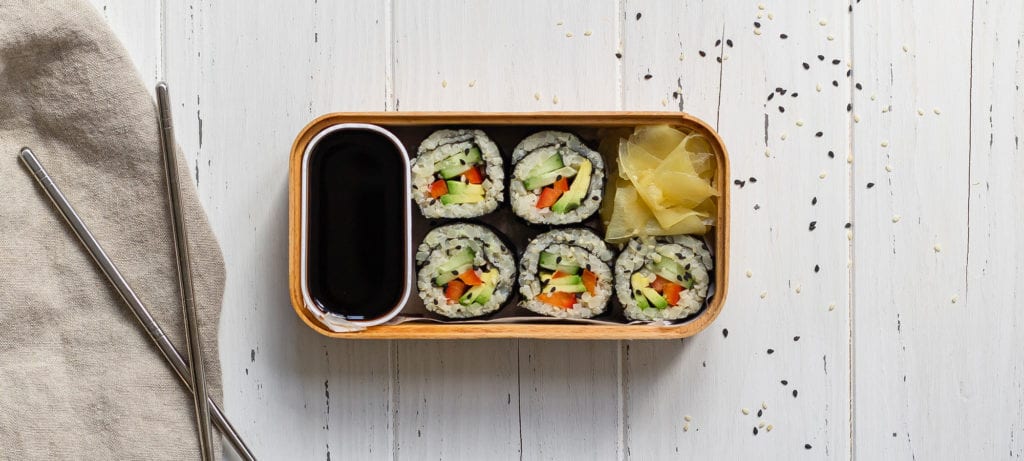
These keto recipes use vegetables to create some truly delicious dishes:
Keto Avocado Cucumber Sushi Roll
This recipe includes avocado, cauliflower, red bell peppers and cucumber. Traditional sushi includes white rice; by replacing this with cauliflower rice, this recipe creates a dish that’s keto-friendly.
Cauliflower Dinner Rolls
Bread (as it’s traditionally made) is a no-no on a keto diet, but you won’t miss it with these dinner rolls. This recipe replaces grains with cauliflower and almond flour, and it’s both vegan and keto-friendly.
Broccoli Cheese Casserole
Broccoli florets. Cream cheese. Mayonnaise. Sound good? This recipe takes comfort food to a whole new level.
Keto Creamed Spinach
This tasty recipe matches spinach with gouda cheese and bacon. If gouda’s not your thing, you can replace it with mozzarella cheese.
Creamy Garlic Mushrooms with Bacon
This fantastic keto recipe goes great with steak, chicken or pork. It includes white button mushrooms, bacon, butter and heavy cream.
Cheesy Hearts of Palm Dip
Looking for a rich dip to accompany your keto veggies? This recipe melds hearts of palm with mayo, eggs and parmesan cheese to create a dip that can be served hot or cold.
Next steps
Veggies can add flavor, variety and nutritional value to your keto diet. Now you know which ones to include and which ones to avoid.
For a convenient, hassle-free approach to keto eating, subscribe to Fresh N Lean. Our Keto meal plan includes tasty dishes such as Asparagus Frittata with Ground Beef and Blackened Shrimp with Roasted Cauliflower. Let us deliver chef-prepared keto meals straight to your door.
Fresh N Lean is the nation’s largest organic meal delivery service. Our tasty, chef-prepared cuisine is always fresh and never frozen, and we offer convenient meal plans like Protein+, Keto, Paleo, Standard Vegan and Mediterranean. Choose Fresh N Lean for affordable nutrition, delivered to your doorstep.
